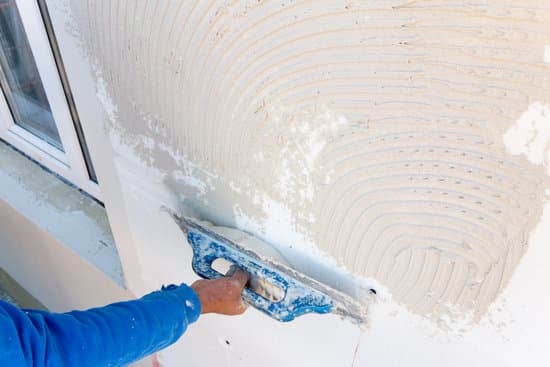Where can you dispose of home improvement debris? Proper disposal of home improvement debris is essential for maintaining a clean and safe living environment. From construction materials to renovation waste, understanding the proper way to dispose of these items is crucial for the well-being of your community and the environment. This article will explore the various options available for disposing of home improvement debris, including local regulations, recycling centers, landfills, waste removal services, and DIY disposal methods.
Improper disposal of home improvement debris can have negative consequences on the environment and pose potential health hazards. Whether it’s old appliances, drywall scraps, or demolished materials, knowing how to handle and dispose of these items responsibly is key. As we delve into this topic, we’ll discuss the different types of home improvement debris that may need to be discarded and highlight safety considerations during the disposal process.
Understanding local government regulations regarding waste disposal is crucial for homeowners embarking on a renovation or construction project. Each area has its own rules and restrictions when it comes to disposing of specific types of debris. Being aware of these regulations will help you navigate through the different options available for proper disposal in your area.
In addition to complying with guidelines set by local authorities, there are also eco-friendly options such as recycling centers that can help minimize your impact on the environment. Let’s dive deeper into understanding how to appropriately dispose of home improvement debris in accordance with local regulations and finding sustainable alternatives for waste management.
Types of Home Improvement Debris
When it comes to home improvement projects, there is often a significant amount of debris that needs to be properly disposed of. It’s important to know what types of debris you will need to dispose of in order to determine the best method for doing so. Common types of home improvement debris include construction materials such as wood, drywall, and concrete, as well as renovation waste like old appliances, carpeting, and furniture.
In addition to understanding the different types of home improvement debris, it’s also crucial to know where can you dispose of home improvement debris in your area. Different locations may have their own regulations and restrictions on what can be disposed of and how it should be done. This will help you determine if recycling centers or landfills are viable options for getting rid of your debris.
| Type of Debris | Description |
|---|---|
| Construction Materials | Includes wood, drywall, concrete, bricks, etc. |
| Renovation Waste | Old appliances, carpeting, furniture, etc. |
| Garden Waste | Branches, leaves, grass clippings |
Knowing the specific type of debris you need to dispose of will help guide your decision-making process when it comes to finding the most suitable method for disposal. Whether you choose DIY disposal methods or opt to hire waste removal services will depend on the nature and quantity of the debris you have.
Local Government Regulations
When it comes to disposing of home improvement debris, it’s crucial to understand the rules and restrictions set by your local government. Each area may have different regulations regarding the types of debris that can be disposed of, as well as the methods and locations where disposal is permitted. These regulations are in place to protect the environment and public health, so it’s important to educate yourself before embarking on any disposal efforts.
To begin with, you should familiarize yourself with the specific guidelines provided by your local government regarding home improvement debris disposal. This information can typically be found on your city or county’s official website, or by contacting the relevant department directly. Pay attention to any prohibitions on certain types of materials or restrictions on disposal methods. Understanding these regulations will help you avoid any potential fines or penalties for improper disposal.
In addition to understanding what materials are allowed for disposal, it’s also important to know where you can legally dispose of home improvement debris in your area. Some local governments may have designated drop-off locations for certain types of debris, while others may require you to schedule a pick-up through their waste management services.
By understanding these regulations and following them accordingly, you can ensure that your home improvement debris is disposed of in a safe and compliant manner.
Recycling Centers
When it comes to disposing of home improvement debris, recycling centers can be an excellent option for those looking to minimize their environmental impact. These facilities are equipped to handle a wide range of materials, from construction waste to household items, and are often able to process these materials in a way that reduces the need for additional resources. Here are some key points to consider when looking into recycling centers as a disposal option:
- Types of Materials Accepted: Many recycling centers accept a wide variety of materials, including wood, metal, concrete, glass, plastic, and more. Before you visit a facility, it’s helpful to check what types of materials they are able to process.
- Location and Accessibility: Recycling centers are often located in convenient areas where homeowners can easily drop off their debris. It’s important to consider the distance and accessibility of the facility before making plans to transport your materials.
- Environmental Impact: Choosing to dispose of your debris at a recycling center can significantly reduce the environmental impact of your home improvement project. By diverting materials from landfills and promoting resource conservation, you can make a positive contribution to sustainability efforts in your community.
In addition to these considerations, it’s important for homeowners to be aware of any specific guidelines or requirements set forth by their local recycling center. This may include rules regarding sorting materials, packaging requirements, or any fees associated with disposal services.
Ultimately, utilizing recycling centers as a disposal option for home improvement debris can be a win-win situation for homeowners and the environment alike. By taking the time to research and identify reputable facilities in your area, you can ensure that your materials are being handled responsibly while also contributing to sustainable waste management practices. Where can you dispose of home improvement debris? Consider exploring the options provided by local recycling centers for an eco-friendly solution.
Landfills
When it comes to disposing of home improvement debris, one common option is taking it to a landfill. Landfills are designated areas for the disposal of waste materials. They are carefully managed to ensure that the waste does not cause harm to the environment or public health. Before you decide to take your debris to a landfill, it’s important to understand the process and guidelines for doing so.
In most areas, there are specific regulations and restrictions on what can be deposited in a landfill. Some items, such as hazardous materials or electronic waste, may not be accepted at all. It’s crucial to check with your local government or landfill facility to determine what materials are allowed before transporting your debris.
Once you have confirmed that your debris is acceptable for disposal at a landfill, you will need to transport it there yourself. This may involve renting a truck or trailer and possibly paying a fee based on the weight or volume of your load. Keep in mind that landfills have specific operating hours and may require you to separate different types of waste before depositing them.
Waste Removal Services
When it comes to disposing of home improvement debris, one option to consider is hiring waste removal services. These professionals can provide an efficient and convenient way to get rid of unwanted materials from your project. Here are some reasons why you might want to explore this option:
- Convenience: Waste removal services can save you time and effort by handling the disposal process for you. Instead of making multiple trips to a recycling center or landfill, you can simply have the professionals come and take away the debris in one go.
- Proper Disposal: Professional waste removal services are knowledgeable about local regulations and can ensure that your debris is disposed of properly. This can give you peace of mind knowing that you are not contributing to environmental damage.
- Large Volume Disposal: If your home improvement project has generated a large amount of debris, such as construction waste or landscaping materials, waste removal services have the capacity to handle such volumes efficiently.
It’s important to do your research when considering waste removal services, ensuring that you choose a reputable and reliable company. Look for reviews and recommendations, and inquire about their disposal methods to ensure they align with your environmental values.
Ultimately, hiring professionals for waste removal can be a hassle-free solution for getting rid of home improvement debris, especially for larger projects or more complex materials. While there may be a cost associated with this service, the convenience and peace of mind it offers may make it well worth it in the end.
DIY Disposal
When it comes to disposing of home improvement debris, many homeowners prefer to take matters into their own hands. DIY disposal can be a cost-effective and convenient option for handling the debris from your latest renovation or project. However, it’s important to do so safely and responsibly to avoid any potential hazards or environmental impact.
Sorting and Separating Materials
One of the first steps in DIY disposal is to sort and separate your home improvement debris. This involves categorizing materials such as wood, metal, plastic, and other items accordingly. This not only makes the disposal process more efficient but also enables you to identify which materials can be recycled or repurposed.
Utilizing Community Drop-Off Sites
Many communities offer drop-off sites where residents can dispose of home improvement debris for free or at a minimal cost. These sites often have designated areas for various types of materials, making it easy for DIY disposers to unload their debris safely and efficiently. Be sure to check with your local government or waste management authority to find out where these drop-off sites are located in your area.
Repurposing and Reusing Materials
Another approach to DIY disposal is to look for opportunities to repurpose or reuse certain materials from your home improvement project. For example, leftover lumber could be used for future DIY projects, while old fixtures or appliances might be donated to a local charity or resale store. By finding new uses for these items, you can minimize the amount of debris that ultimately needs to be disposed of.
By implementing these DIY tips and techniques for handling home improvement debris on your own, you can make the disposal process more efficient, cost-effective, and environmentally friendly. As you take on your next renovation project, consider how these strategies can help you manage the aftermath responsibly while achieving a sense of satisfaction in reducing waste and contributing positively to your community.
Safety Considerations
When it comes to disposing of home improvement debris, safety should always be a top priority. Not only do you need to protect yourself from potential hazards, but you also need to ensure that the environment is not negatively impacted by your disposal methods. Here are some important safety considerations to keep in mind when getting rid of your home improvement debris.
Proper Handling and Storage
Before you even think about disposing of your home improvement debris, it’s essential to handle and store it properly. This means wearing protective gear such as gloves, goggles, and masks to avoid any potential injuries or exposure to harmful substances. Additionally, it’s crucial to store the debris in a safe and secure location where it won’t pose a risk to anyone or anything.
Chemical Disposal
Many home improvement projects involve the use of chemicals that can be hazardous if not disposed of correctly. Whether you’re dealing with paint, solvents, or other toxic substances, it’s important to research the proper disposal methods for these items. Some local recycling centers may accept certain types of chemicals, or there may be specific drop-off locations for hazardous waste in your area.
Environmental Impact
Consider the environmental impact of your disposal methods. If possible, opt for eco-friendly options such as recycling centers that accept construction materials or waste removal services that prioritize sustainability. By choosing responsible disposal methods, you can minimize the negative impact on the environment and contribute to a healthier planet for everyone.
By keeping these safety considerations in mind during the disposal process, you can protect both yourself and the environment from potential harm. Whether you’re handling debris on your own or enlisting the help of professionals, prioritizing safety is essential in every step of the disposal process.
Conclusion
In conclusion, proper disposal of home improvement debris is crucial for maintaining a safe and clean environment. Whether you are renovating your home, landscaping your yard, or completing a DIY project, it is essential to understand the different options available for disposing of waste. By being aware of local government regulations, exploring recycling centers, considering landfills, and even hiring waste removal services, you can make an informed decision about how to best handle your debris.
Recycling centers are an excellent option for eco-friendly disposal, as they often accept a wide range of materials and ensure that recyclable items are repurposed rather than ending up in landfills. Alternatively, landfills provide a necessary option when recycling or other methods are not viable.
Waste removal services offer convenience and efficiency for handling large quantities of debris but may not be necessary for small-scale projects. Lastly, if you choose to handle disposal on your own, it is important to take safety considerations into account to protect both yourself and the environment.
Ultimately, the best choice for disposing of home improvement debris will depend on the type and quantity of waste you have, as well as your location and access to different disposal resources. By understanding the importance of proper disposal and considering all available options, you can make a responsible choice that keeps your surroundings clean and minimizes negative environmental impact.
Frequently Asked Questions
How Do You Clear Construction Debris?
Construction debris can be cleared by first separating the different types of waste such as wood, metal, and concrete. Then, you can hire a construction debris removal service or rent a dumpster to dispose of the materials properly.
How Do You Dispose of Concrete Blocks?
Disposing of concrete blocks requires heavy lifting and proper equipment. You can either break them down into smaller pieces for easier disposal, or you can hire a professional hauling service that has the necessary tools and vehicles to remove concrete blocks safely.
How Do You Dispose Waste Materials at Home?
When disposing of waste materials at home, it’s important to first separate recyclable items from general waste. Recycling bins can be used for items like paper, plastic, and glass, while general household waste should be placed in designated trash bags or bins for collection by your local waste management service.

I’m thrilled to have you here as a part of the Remodeling Top community. This is where my journey as an architect and remodeling enthusiast intersects with your passion for transforming houses into dream homes.





